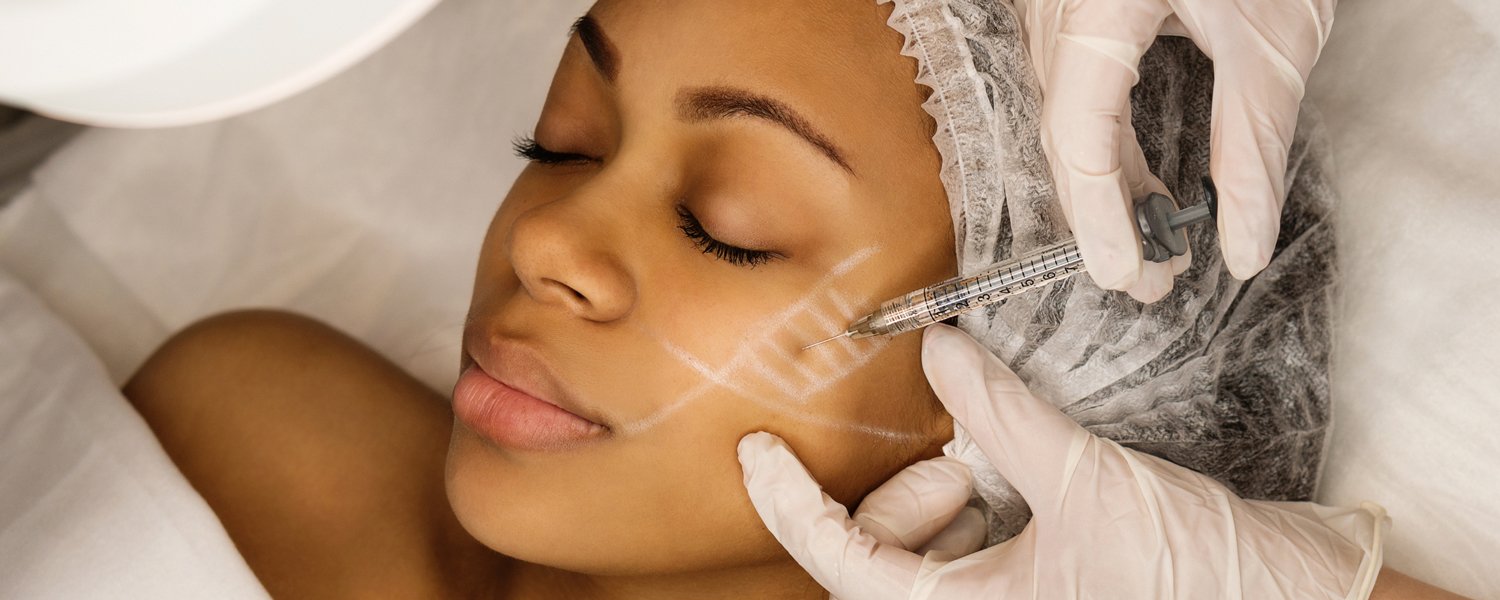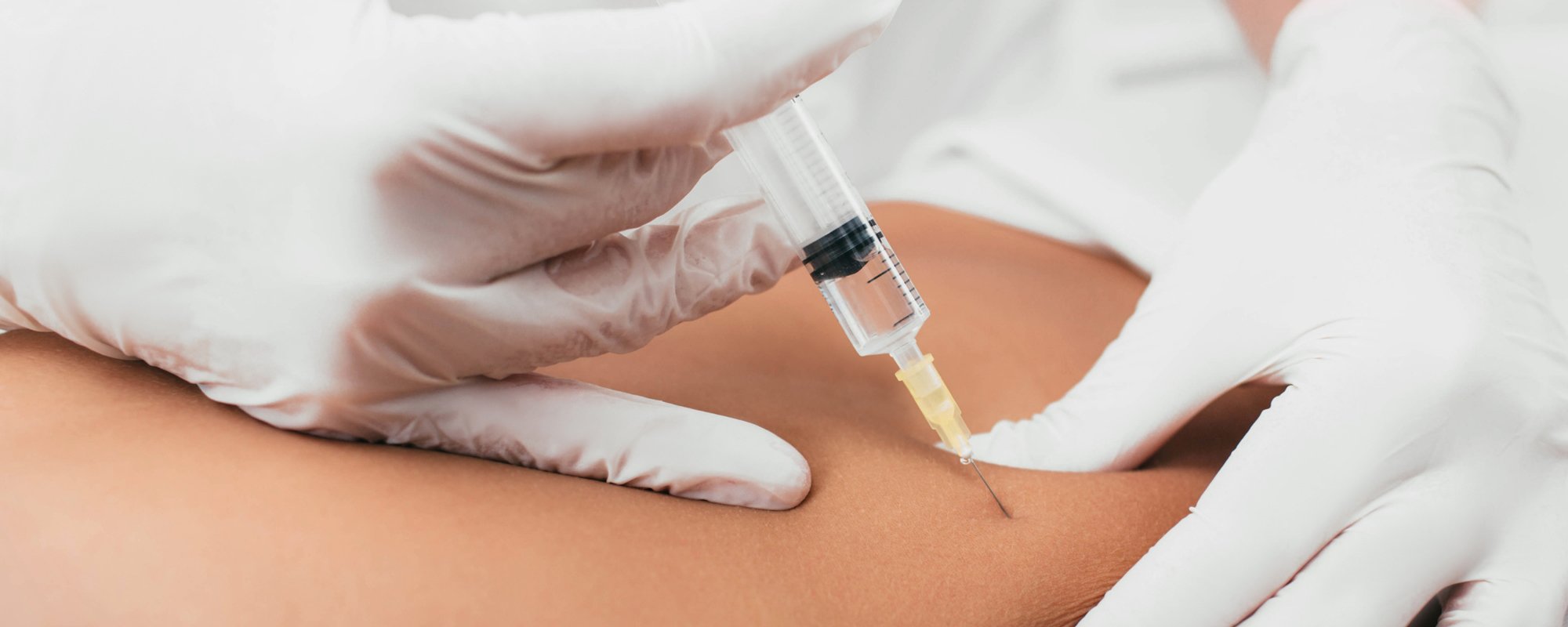
PDO Threadlift
Thread Lift in Dubai
PDO Threads offer the latest technology for a non-invasive procedure to create a soft and natural lift.
Threadlift is designed for facial rejuvenation and tightening to create a facial rejuvenation and lift without requiring surgery, resulting in less downtime, lower cost, and lower risk compared to a surgical lift. This procedure helps to improve deep folds, wrinkles, and can help reverse issues in skin texture as well. It can be used to lift cheeks and eyebrows, reduce eye bags, reduce laugh lines, and lift sagging necks. It can also be used on other areas of the body to improve skin laxity, such as the arms, abdomen, buttocks, and thighs.
PDO, or polydioxanone, is a biocompatible product commonly used in surgical sutures. Once placed, the PDO suture remains permanently in the skin and is reabsorbed over 3 to 6 months, while also eliciting collagen production around the suture, leading to long-lasting results.
There are two types of PDO threads commonly used: smaller mono threads, which are inserted in a mesh-like fashion to improve skin laxity and tighten and firm the skin, and larger Cog PDO threads, which are bigger and have more anchoring and lifting properties. These are inserted using cannulas along the vectors of the face, creating a lift.
The non-invasive procedure yields amazing rejuvenation results and is practically painless, leaving no scar or cuts. In addition to lifting, threadlift also induces production of collagen and new skin as a natural response, thus enhancing the results.
-
Numbing cream may be required to make the procedure comfortable. For larger threads, such as cog threads, local anesthetic injections are used at the point of insertion. This procedure involves the placement of PDO threads into the middle layer of the skin by an expert. Immediately after the treatment, there may be slight swelling and possibly minor bruising along the treatment area. There may be mild discomfort during facial movements due to the threads pulling on the tissue. Minor asymmetry from swelling and hypercorrection usually disappears within two weeks. Most patients take less than a week to return to normal activities, including work, but some may take up to one or two days. There is some immediate lift, especially with the bigger cog threads, but the results typically take one to two months to be fully visible and last nine to twelve months. Results may vary from person to person depending on the severity of laxity, number of threads used, thickness of the skin, and how much firming occurs with the lift.
-
Avoid taking anticoagulants such as aspirin and NSAIDs 48 hours before the treatment, and avoid alcohol consumption 48 hours before the treatment. Additionally, avoid taking supplements such as evening primrose oil, vitamin D, A and E, fish oils, flaxseed oil, magnesium, garlic, and ginkgo before the treatment. On the day of the appointment, avoid wearing makeup on the face or using harsh beauty products.
-
Recovery from a thread lift is comparatively easy, as the procedure is performed under local anaesthesia. After the procedure, you may be swollen and bruised for up to two weeks, depending on the number of areas that have been treated. In most cases, bruising and swelling is mild, but it can take up to seven to ten days to resolve. Arnica cream or tablets can help with swelling and bruising. Sometimes slight irregularities may appear in the treated area, but they usually settle down in a few days post-procedure.
Post-procedure ice packs can be used for swelling and soreness. Analgesics may be required in the first few days, and depending on the procedure, a short course of antibiotics may be prescribed by your physician. It is best to avoid massaging, putting undue pressure, or sleeping directly on the treated area for the first few days. Avoid heavy exercise or sports, steam saunas for the first two days, and any facial treatments for the coming two to three weeks
FAQ on PDO Threadlift
-
In Dubai, there are many different types of threads available, including PDO threads, poly-l-lactic acid threads, and Aptos threads. At our clinic, we currently offer PDO threads. PDO threads come in two basic types: Mono or Meso threads and Cog threads. Mono or Meso threads are thin lengths of PDO threads (about the thickness of a hair) that are loaded onto a thin needle and inserted into the skin. The needle can hold single flat threads, or threads wound in a spiral (screw threads), or multiple threads braided together. The more PDO material in the thread, the more collagen stimulation we can expect. Mono threads are usually completely absorbed by 3-6 months. Cog threads are thicker threads made of PDO that are loaded onto a cannula and inserted into the skin. These threads have little cogs or anchors around them (depending on the placement, these can be barb or anchor threads) that hook onto the skin and can lift up sagging skin of the cheek, jowl, or brow when the thread is pulled upwards. As they are stronger than mono threads, cogs can obtain more lifting and contouring. Cog threads are usually fully absorbed between 6 months to 9 months.
-
A PDO thread lift treatment can help improve skin quality (smoothen and rejuvenate) and tighten sagging skin on the face, neck, and body (arms, abdomen, and buttocks). Depending on what we want to achieve, we will use monofilaments, cogs, or combinations of threads. As a general guideline, monofilaments are more suitable for younger patients who are not yet sagging a lot and mainly want to maintain their skin quality and firmness. We may also use monofilaments to help tighten the skin in some areas or to prepare the skin to receive cogs in older patients. Cogs are generally suitable once there are signs of sagging skin, such as the jowls, for patients from their 30s onwards.
-
No, threads can be used in multiple areas of the body. Although they are popularly used to enhance the contours of the face, jawline, and eyebrow lift, they can also be used for the chin, neck, breasts, arms, abdomen, buttocks, inner thighs, knees, and elbows
-
Women and men between the ages of late 30s to late 50s with mild to moderate skin laxity are often best-suited for this procedure. That being said, it is also an excellent option for those who are looking for alternatives to fillers and energy-based devices but are not willing to undergo a surgical facelift. It is also a good option for those who cannot undergo a surgical lift, such as those with chronic high blood pressure and diabetes. In general, we avoid thread lifts in patients with very thin or very loose skin. It is best to let the dermatologist assess your skin and your concerns to determine the best option for you.
-
Thread Lifts are contraindicated in patients with known allergies to plastic, biomaterial, and non-absorbable fillers, active infections at the site, and keloidal tendencies. We also generally avoid thread lifts in patients with autoimmune or collagen vascular disorders, porphyrias, malignancies, uncontrolled diabetes, or hypertension. Patients on anticoagulants have a potentially higher risk of bleeding, bruising, and hematoma formation and may need to look for other options. Thread Lifts cannot be done in breastfeeding or pregnant women. It is best to inform your doctor about any medications or treatments you are currently on before proceeding with the treatment.
-
Like all procedures of this type, there is a possibility of side effects, although not everyone experiences them. The prevalence of major side effects in threadlifts is fairly low (at about 3%). Most side effects, if any, are minor and of short duration, and usually self-limiting. Side effects mainly include soreness, swelling, and bruising post-procedure. A tight sensation is very common post-treatment and usually resolves within a few days. Skin dimpling can occur, especially if there is a lot of sagging to be corrected, but usually resolves by itself within days to weeks. There is a small chance of infections, visible appearance of threads, weakening of thread fixation, allergic reaction, and injury to deeper structures (rare).
In summary, thread lifts are low risk due to their non-invasive nature. In rare cases, patients may experience irritation, infection, or sutures becoming visible under their skin. However, if this occurs, the threads can be removed and the patient's face will return to its original state.
-
Thread lifts do not change the face's original features, but they can help reposition the soft tissue back to its original location. This process begins in about three weeks, and the results continue to improve, peaking around three to six months and lasting up to 12 to 18 months. The thread itself is biodegradable, leaving a scaffold of new collagen and elastin around it to support the results and maintain a smooth and supple texture of the skin. After a thread lift, you can typically expect to look like you did several years ago. It is important to note, however, that while threads can provide a lift, most threads do not replace lost volume and this may require additional treatments.
-
The duration of your treatment depends on the area involved, usually taking around 30-45 minutes. Pre-treatment preparations, such as cleaning and preparing the skin and the application of numbing medication, usually take around 30 minutes. This is a procedure with minimal downtime, and patients can resume their normal activities almost immediately.
-
Depending on the type of threads used, some lift may be immediately visible. However, long-lasting results are often visible after about a month and continue to improve over the next few months. It is important to remember that results will vary depending on many factors, such as the severity of laxity and thickness of the skin, the type and number of threads used, and patient factors. Sometimes, mono threads may require two to three sessions, which we recommend at least three months apart. Cog threads may be sufficient after a single session, but can be supplemented with additional monos after three months.
-
Absolutely! Combining PDO threads with PRP and other cosmetic treatments, such as anti-wrinkle injections and dermal fillers, can yield great results. Energy-based devices for collagen stimulation and tightening can also be used with threads, as long as there is enough space to allow for skin healing.
-
The results of a threadlift depend on the skill of the physician performing the procedure, as well as the type of threads being used. As all faces are different, threadlift results may vary depending on the facial shape, structure, and area being lifted. We offer an in-depth consultation before threadlifts to ensure that threadlift is the right treatment for you.
Learn More about non surgical face lifting with PDO threadlift in Dubai
Call 042505081, to schedule your appointment with our expert dermatologist.






